Tachograph Analysis: A Comprehensive Guide
Tachograph analysis is a critical process for ensuring compliance with UK transportation regulations. It involves the systematic review of data recorded by tachographs, which are devices fitted to commercial vehicles to track driving times, breaks, and rest periods. This analysis is essential for fleet managers, transport operators, and anyone responsible for vehicle compliance.
Understanding Tachograph Analysis
Tachograph analysis is performed to ensure drivers and transport companies adhere to legal driving time limits and rest requirements. This process helps prevent driver fatigue, promotes road safety, and ensures compliance with Driver’s Hours Regulations.
Benefits of Tachograph Analysis
- Improved compliance with legal standards
- Enhanced road safety by monitoring driver fatigue
- Optimised fleet management and operational efficiency
- Reduced risk of fines and penalties
Risks of Ignoring Tachograph Analysis
Neglecting tachograph analysis can lead to serious consequences, including hefty fines, increased accident risk, and potential legal liability. It is crucial for transport operators to prioritise this analysis to safeguard their operations.
Legal and Regulatory Context
In the UK, tachograph analysis is governed by the Driver and Vehicle Standards Agency (DVSA) regulations. Compliance with these rules is mandatory for all commercial vehicle operators.
Costs of Implementing Tachograph Analysis
While there are costs associated with implementing tachograph analysis, such as purchasing software or hiring specialists, the investment is justified by the benefits of compliance and safety. Many companies find that the cost savings from avoiding fines and improving efficiency outweigh the initial expenses.
How to Implement Tachograph Analysis
- Choose a reliable tachograph analysis software or service.
- Train staff on how to interpret tachograph data.
- Regularly review and audit tachograph records.
- Use insights from the data to improve fleet operations.
Common Mistakes in Tachograph Analysis
Transport managers often make mistakes such as failing to regularly update software, ignoring discrepancies in data, or not providing adequate training to staff. Avoiding these pitfalls is crucial for effective tachograph analysis.
Pros and Cons of Tachograph Analysis
| Pros | Cons |
|---|---|
| Ensures legal compliance | Initial setup costs |
| Improves road safety | Requires ongoing management |
Key Takeaways
Tachograph analysis is vital for compliance and safety in the transport industry. By understanding and implementing effective analysis, operators can enhance efficiency and reduce risks.
FAQs
What is tachograph analysis?
Tachograph analysis is the examination of data from tachographs to ensure compliance with driving regulations.
Who needs tachograph analysis?
Fleet managers, transport operators, and drivers responsible for compliance with driving time regulations.
How often should tachograph analysis be conducted?
Regularly, ideally weekly or monthly, to ensure ongoing compliance.
Can tachograph analysis prevent fines?
Yes, by ensuring compliance, it helps avoid penalties for regulatory breaches.
Is tachograph analysis mandatory?
Yes, for commercial vehicle operators in the UK, compliance with tachograph regulations is mandatory.
Book a Free Compliance Review
Get a free 30-minute review of your fleet compliance. Contact us today.





